

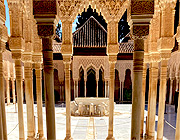
The most famous buildings of the magnificent Alhambra in Granada are the Nasrid Palaces, with their fabulous plasterwork and tranquil courtyards.
See also Alhambra.
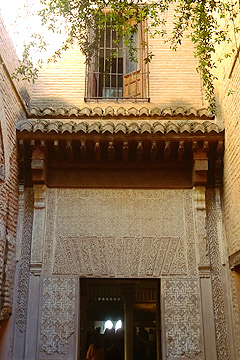
The sumptuous rooms in the Nasrid Palaces include prayer rooms, cool courtyards, royal audience chambers and living quarters, most decorated with beautiful tiles and fine carved stone and many with water flowing in channels or splashing in fountains.
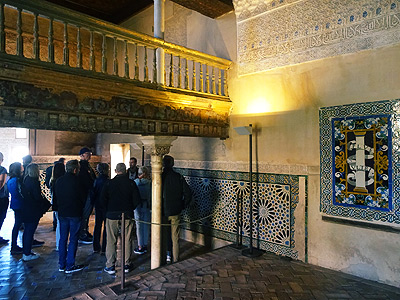
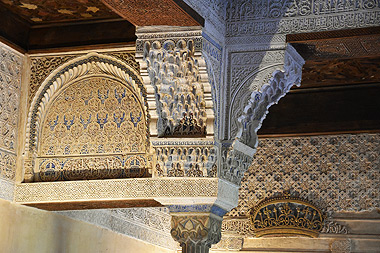
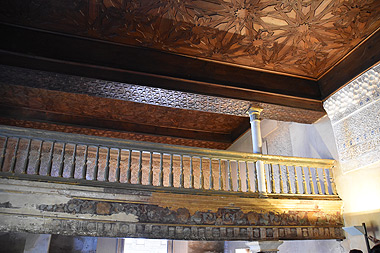
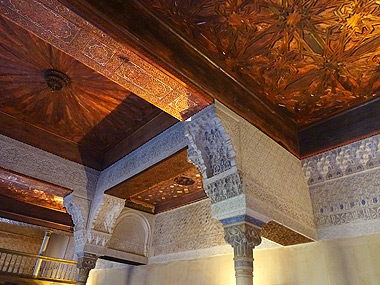
Entry leads first into the Mexuar, a meeting place for ministers and where the sultan dispensed justice. Such a room has probably existed here in some form since the early 14th century but like many of the palace buildings has undergone extensive change, particularly under the Catholics from 1492.1
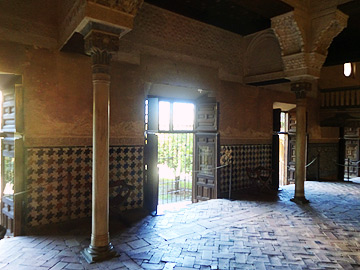
The central space is defined by four slender columns from the Nasrid period. Originally there was a central lantern which allowed light to enter but this was removed when an upper floor was added in the 16th century. The space was converted into a chapel with a raised balcony for the choir at the north end.
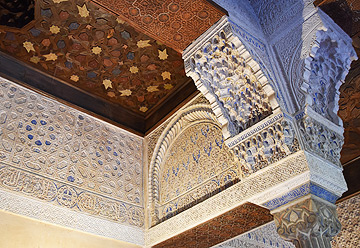
The ceiling above this central space is from the Christian era but the others are older of Nasrid origin with beautiful geometric designs.
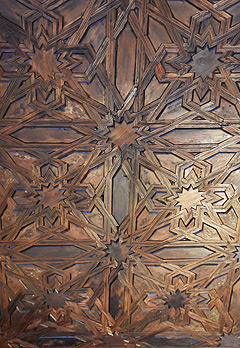
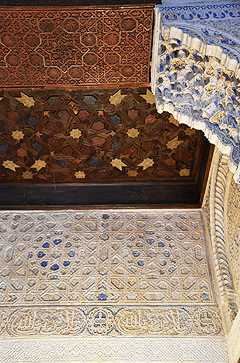
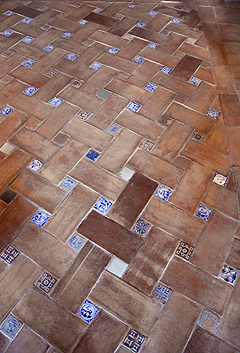
Mocarabes or muqarnas, the Islamic decorative effect often applied to vaulting is here carved into the corbels of pillars.
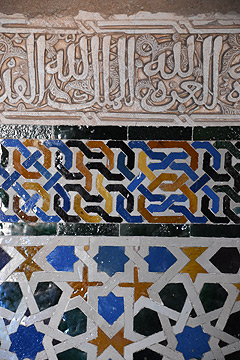
There are many traditional elements of Islamic architecture including ceramic tiling and beautiful stucco work accompanied by Islamic script reminding the viewer of God's presence and power.
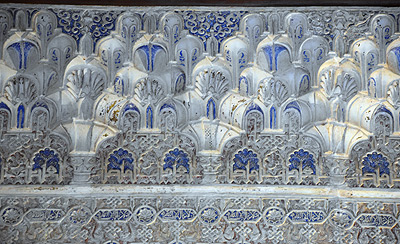
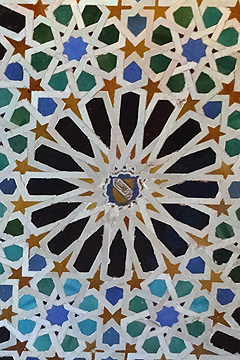
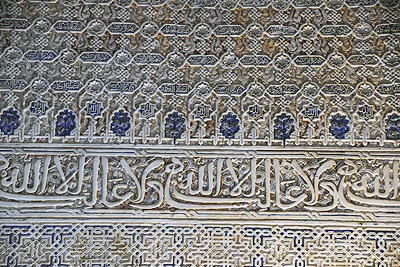
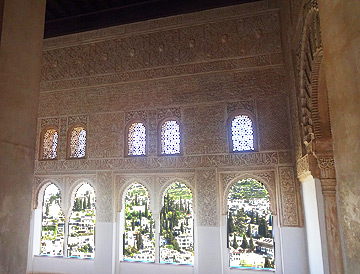
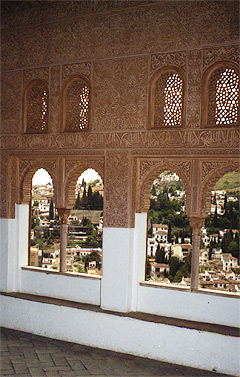
At the north end of the Mexuar is the Oratory. Originally this was entered from the gallery at the north end of the Patio de Machuca. The Alhambra has several oratories, as well as the mosque, where the Sultan could pray.
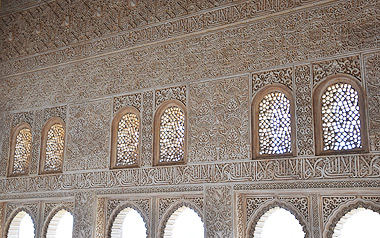
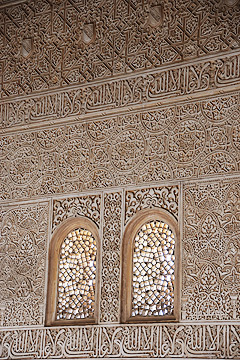
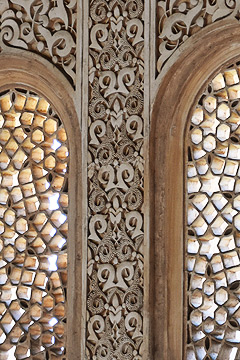
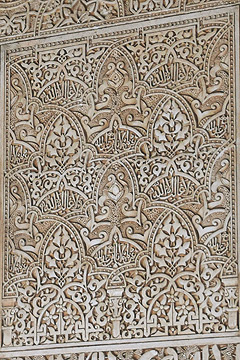
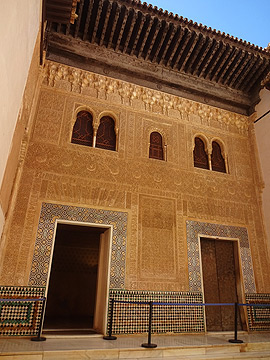
The Comares Palace includes the magnificent facade, the Court of the Myrtles (Patio de los Arrayanes), Hall of the Boat (Sala de la Barca), and the Ambassadors' Hall (Salon de Embajadores) in the Comares tower at the north end of the Court of the Myrtles.
Yusuf I and his son Mohammad V were largely responsible for the beautiful rooms and courtyards in the first half of the fourteenth century.
The facade, on the south side of the Patio of the Golden Room, is stunning. Intricate plasterwork and multicoloured tiling surround two entrances and delicate first floor windows. Apparently it was originally painted in vibrant colours.1 Above is a beautifully carved timber eave.
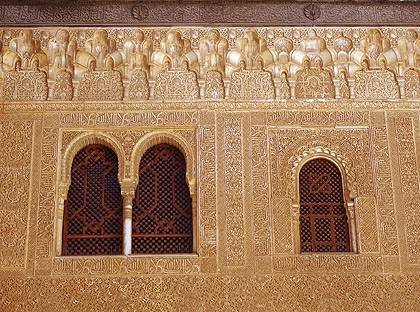
The facade separated the public and private areas of the palace with the right hand door leading to the sultan's private apartments and the left hand door further into the palace.1
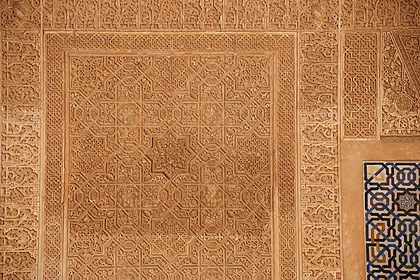
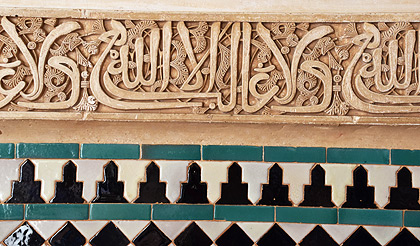
The sultan granted audiences in this small courtyard,, perhaps also dispensing justice here, though it's not clear how it differs in this capacity from the Mexuar.
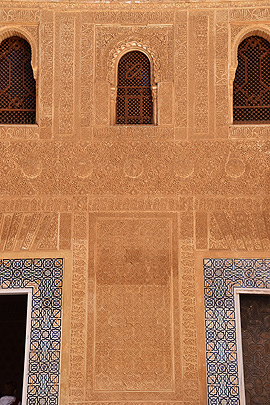
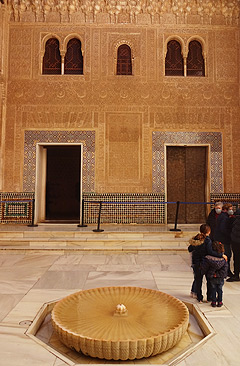
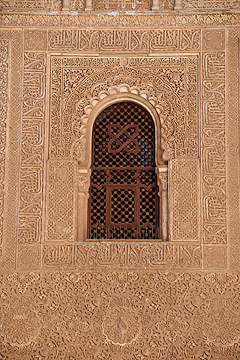
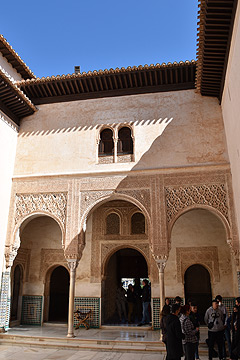
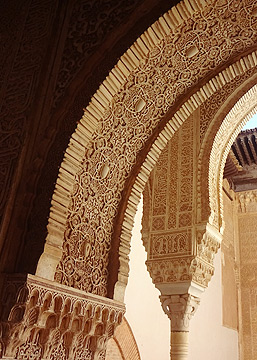
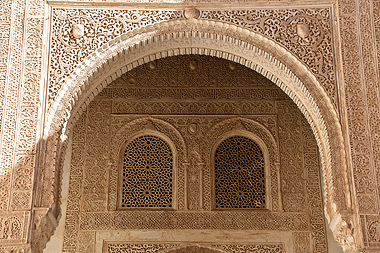
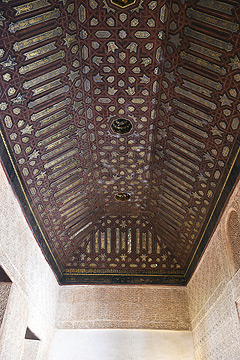
On the north side of the courtyard is the Golden Room (Cuarto Dorado), so named because of the gilded, carved wooden ceiling.
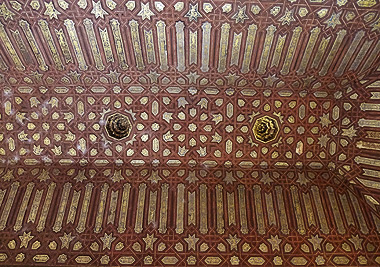
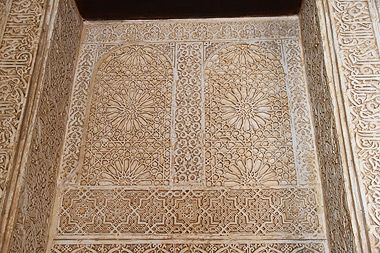
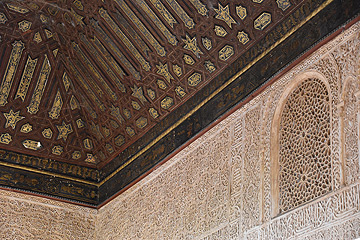
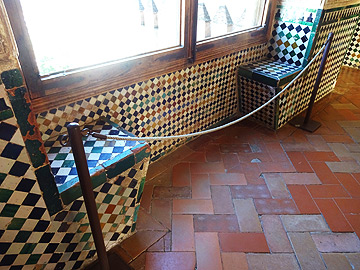
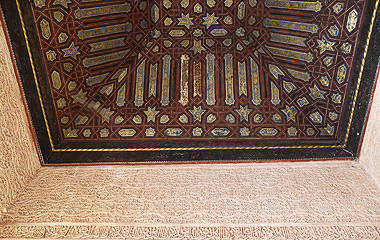
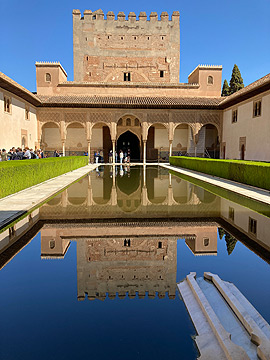
The Court of the Myrtles (Patio de los Arrayanes), probably completed during the reign of Sultan Mohammad V in the latter half of the fourteenth century,2 is reached through the beautiful south facade.
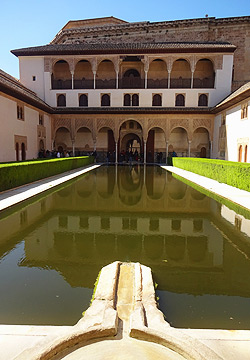
It is named for the myrtle bushes which border the length of the central pool on both sides, though it has been known by other names in the past.2
The beautiful long pool is fed by a fountain at each end in front of delicately arched and pillared porticoes.
The long sides of the court were once the women's quarters
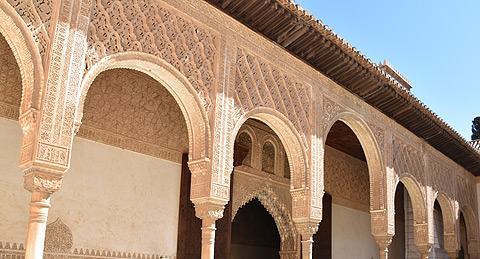
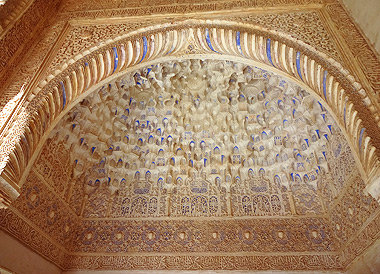
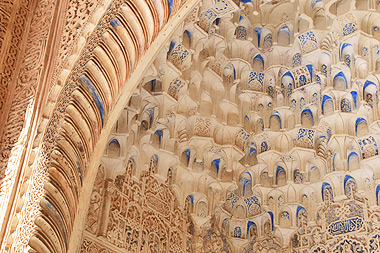
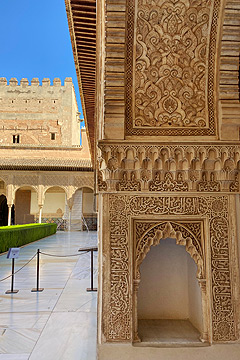
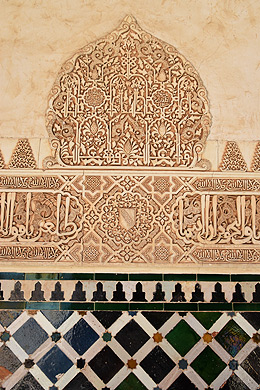
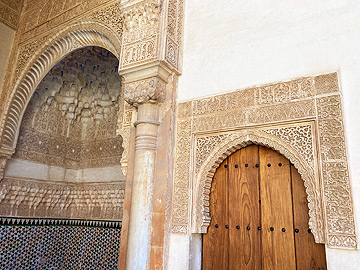
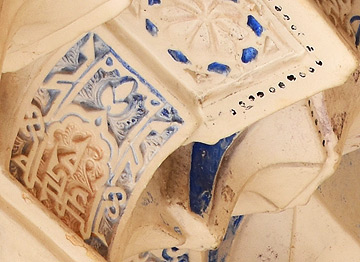
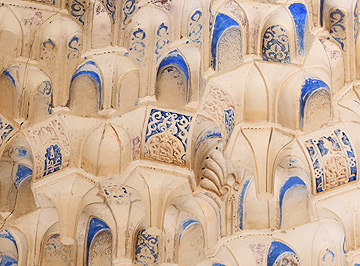
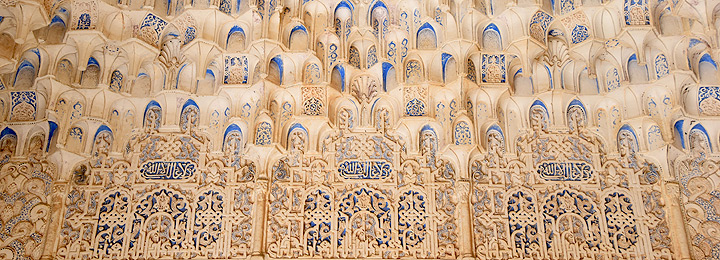

Behind the northern portico is the Comares Tower. At 45m high it is the tallest tower in the Alhambra2 it's name comes from the stained glass windows called comarías.
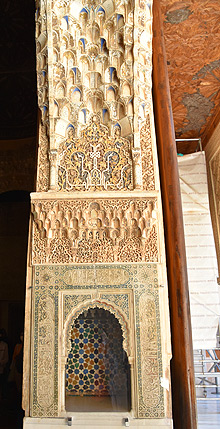
Through the portico the Hall of the Boat (Sala de la Barca) was originally Sala de la Baraca - Hall of the Blessing, but Baraca degenerated to Barca.2 It stretches the width of the tower 24m, but its beautiful ceiling was destroyed by a fire in 1890. It was replaced with a copy which was completed in 1964.
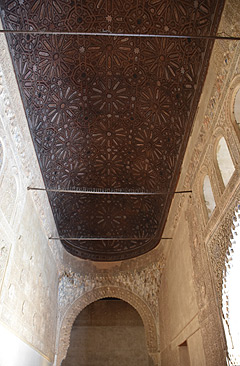
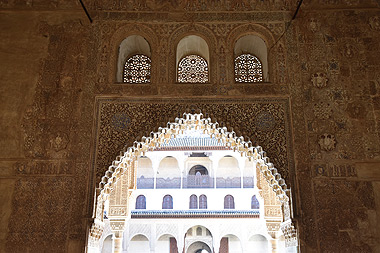
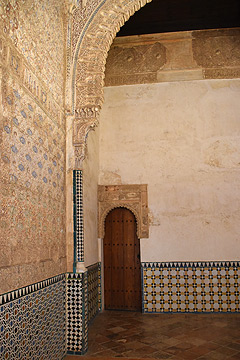
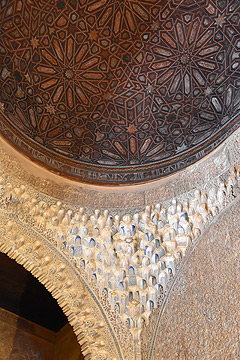
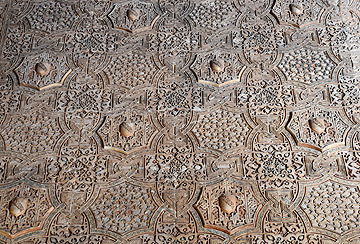
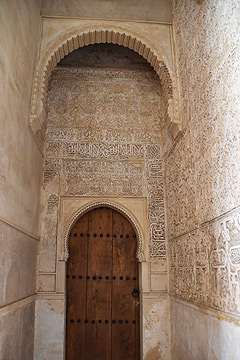
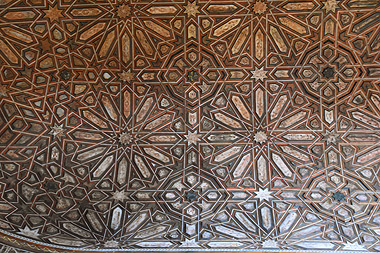
Between the Hall of the Boat and the Hall of the Ambassadors (Sala de los Embajadores) is a narrow corridor with a door at each end.
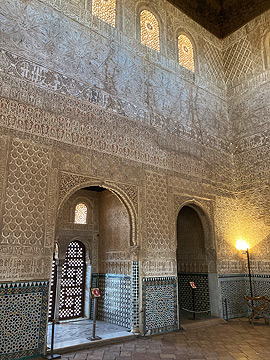
The Hall of the Ambassadors is the largest room in the palaces at 11.3m square. The walls to each side and opposite the entrance have three alcoves or small rooms. The floor was once marble slabs but is now covered with simple clay tiles. This was the sultan's throne room and as such was richly decorated.
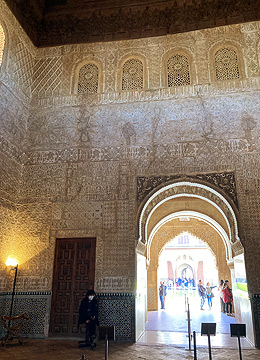
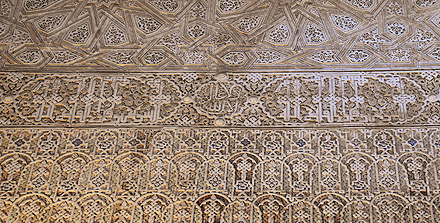
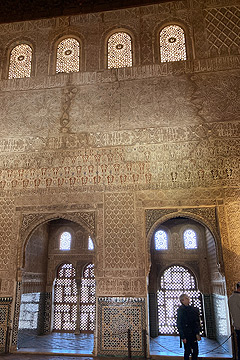
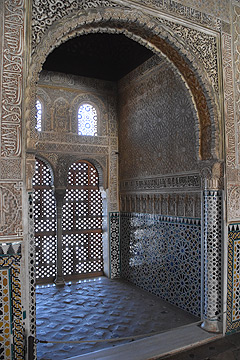
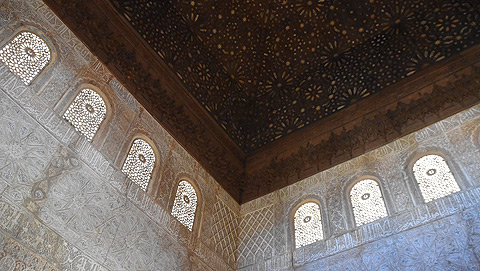
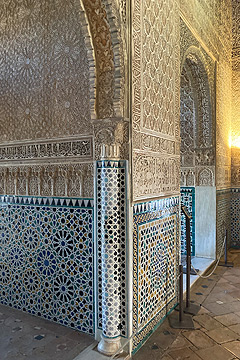
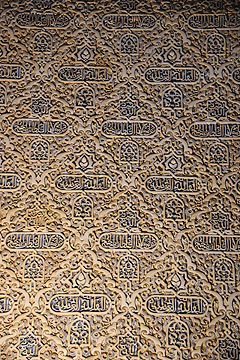
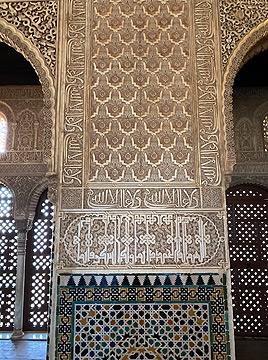
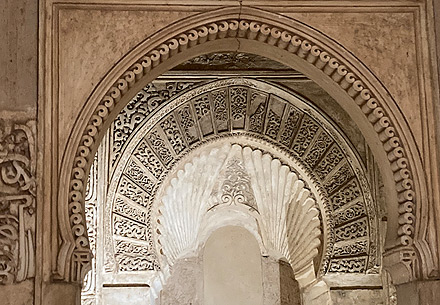
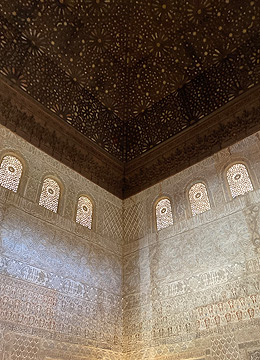
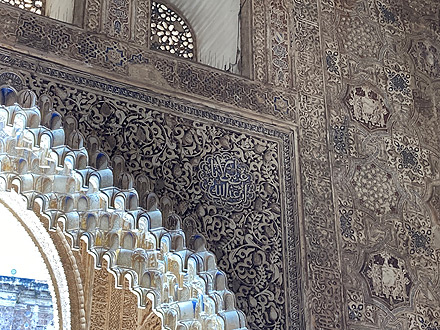
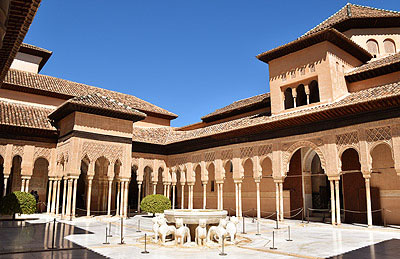
The Palace of the Lions is the creation of Sultan Mohammed V in the middle of the 14th century, comprising the Court of the Lions, Hall of the Abencerrajes (Sala de los Abencerrajes), Hall of the Kings (Sala de los Reyes), Hall of the Two Sisters (Sala de Dos Hermanas), Hall of the Muqarnas (Sala de los Muqarnas), Hall of the Ajimeces (Sala de los Ajimeces), Daraxa's Mirador (Mirador de Daraxa) and the Harem (Harén), not all of which can be visited.
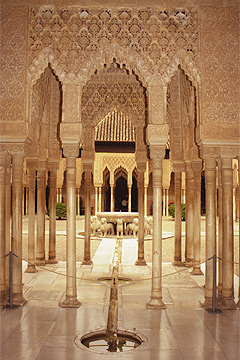
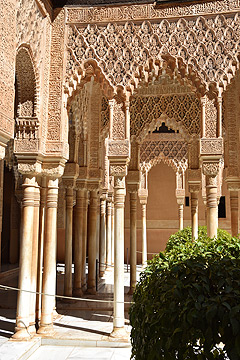
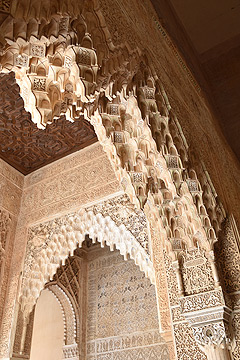
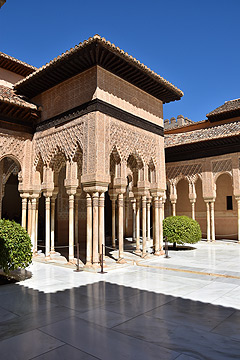
The Court of the Lions, the magnificent centrepiece of the palace, is entered from the Court of the Myrtles via the Hall of the Muqarnas a fairly simple room, by the palace's standards, with beautiful muqarna decoration.
The court is surrounded on all four sides by cloister-like arcades supported on slender pillars.
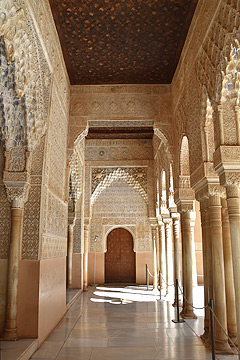
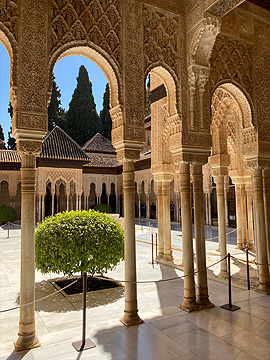
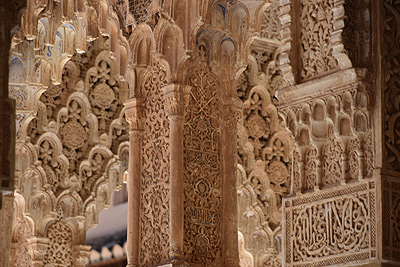
The stunning white marble fountain in the centre of the court is supported by twelve stone lions and water channels run symmetrically between the fountain and the four sides of the courtyard.
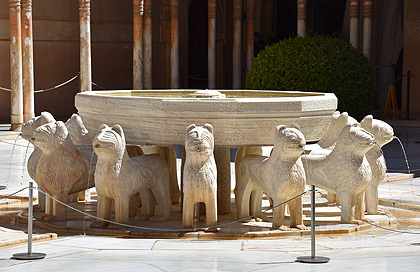
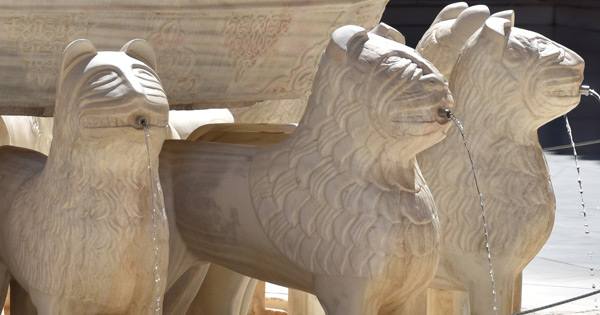
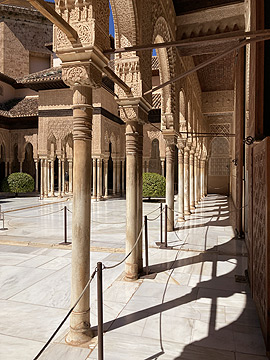
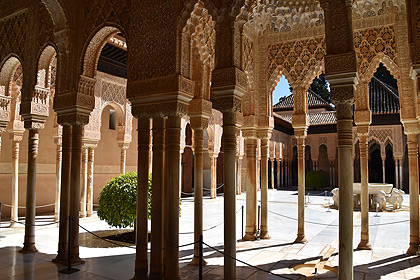
On the south side of the Court of the Lions is the Hall of the Abencerrajes. Legend has it that in the 16th century members of the Abencerrajes family from North Africa were invited to a banquet and then murdered here.1
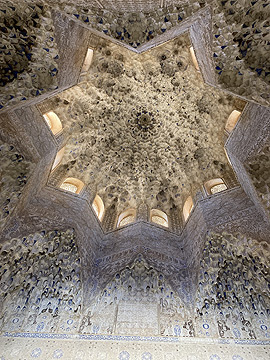
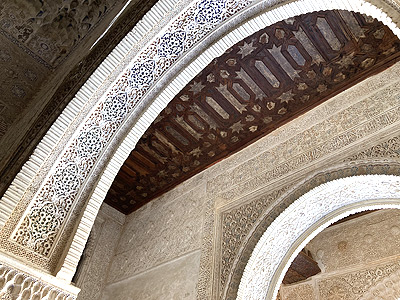
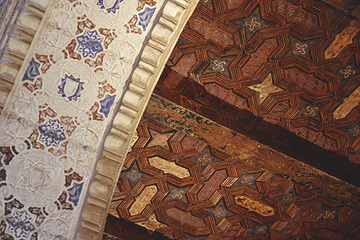
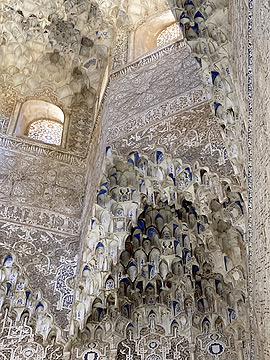
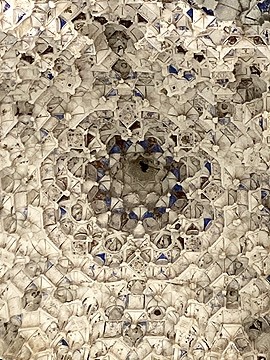
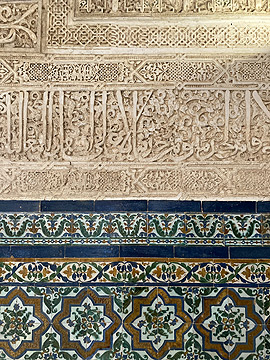
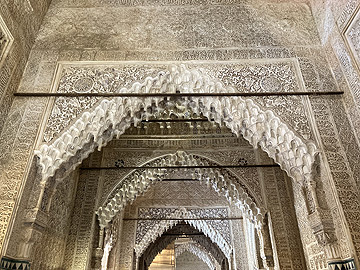
On the east side of the Court of the Lions the Hall of the Kings is unusual in that there are wonderful paintings on the vaults depicting figures and medieval scenes.
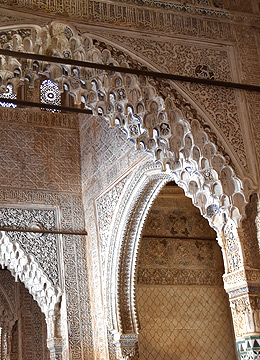
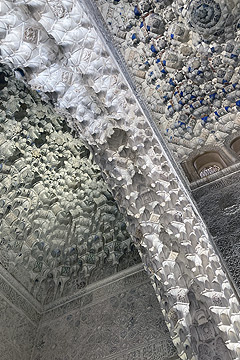
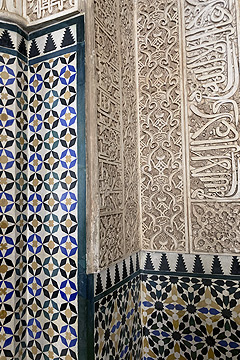

The hall is composed of a long gallery of 3 large, square, spaces separated by four smaller rectangular spaces. Each space is covered by a vault laden with mocarabes. To begin with the gypsum plaster was applied to the vault and arches and the mocarabes were then carved. Later moulds were also used.3
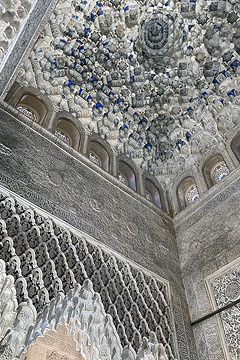
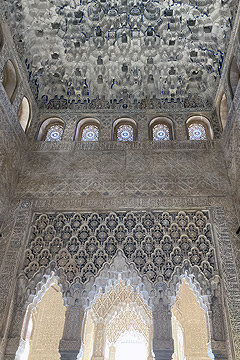
Opening onto the gallery are seven rooms: four small square rooms separated by three rectangular rooms. The vault of each of the rectangular rooms is decorated with a vividly colourful oval painting.
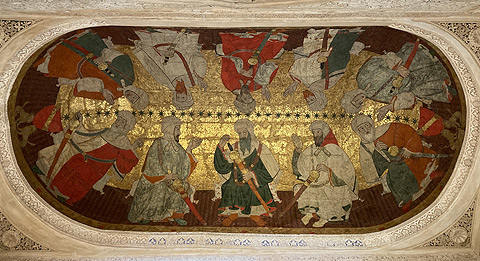
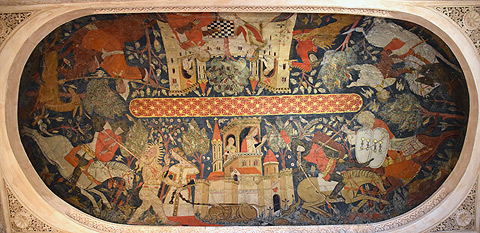
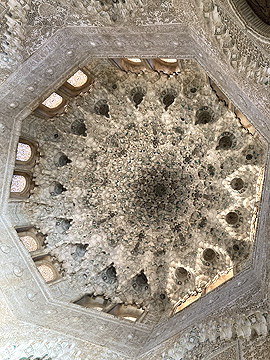
On the north side of the Court of the Lions is the Hall of the Two Sisters, so called because of two large marble slabs in the floor.
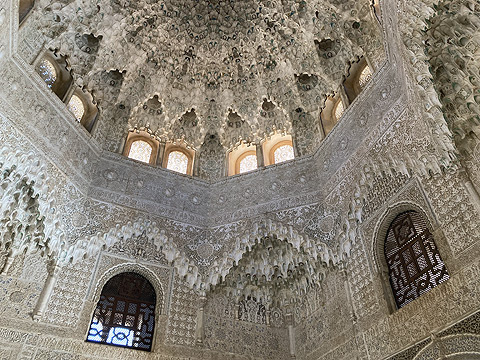
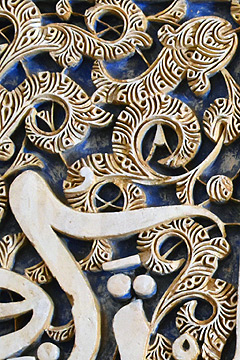
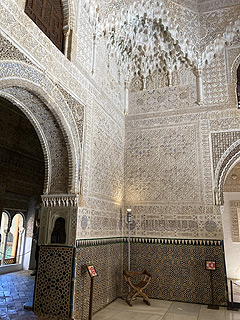
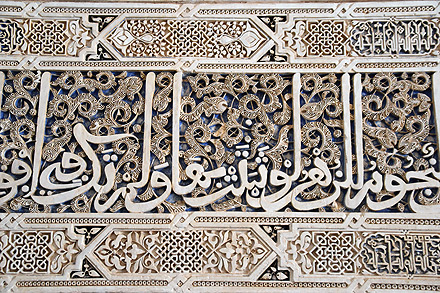
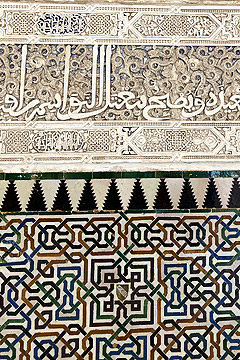
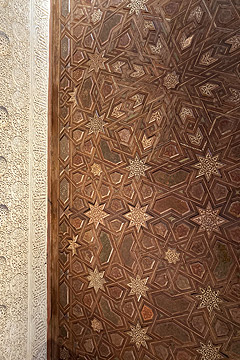
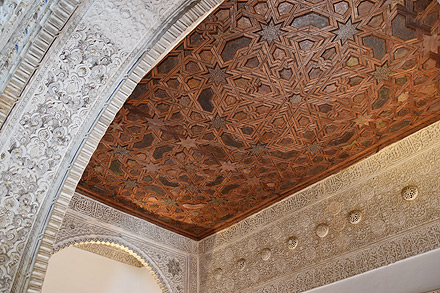
On the north side of the Hall of the Two Sisters an archway leads to the Hall of the Ajimeces with its rectangular vault of mocarabes, and Daraxia's Mirador, overlooking Daraxia's Patio.
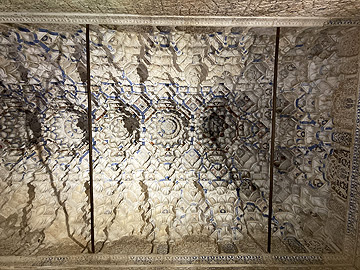
Daraxa's Mirador is an exquisite, small space projecting from the north wall of the Hall of the Ajimeces. On three sides arched openings look out over Daraxa's Patio.
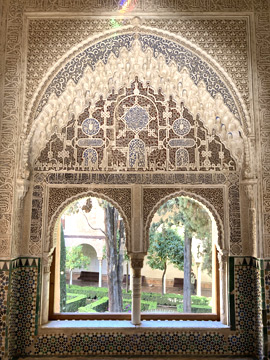
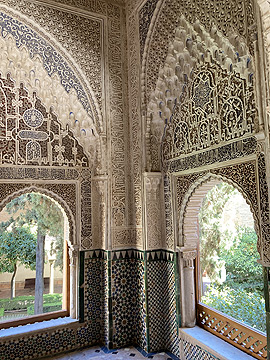
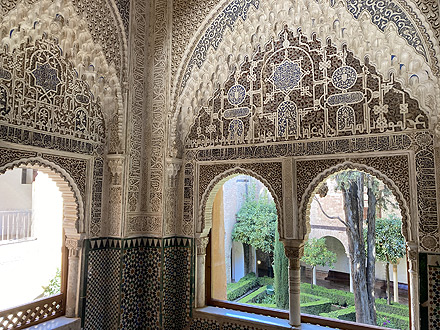
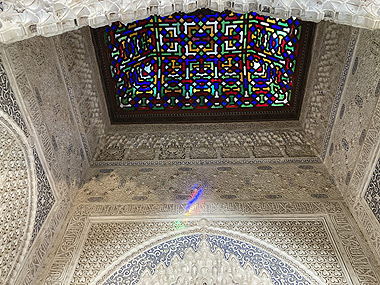
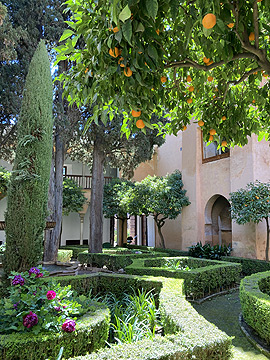
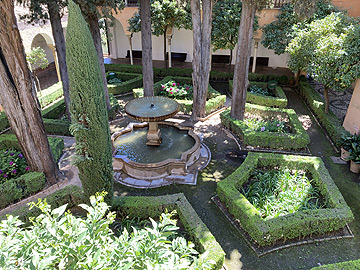
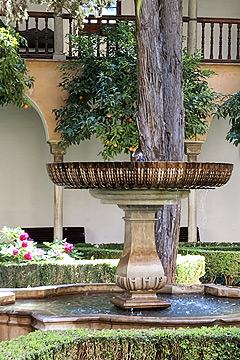
The fountain in Daraxa's Patio originally stood in the Patio of the Golden Room.